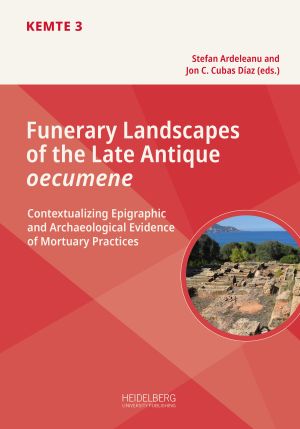Zitationsvorschlag
Lizenz (Kapitel)

Dieses Werk steht unter der Lizenz Creative Commons Namensnennung - Weitergabe unter gleichen Bedingungen 4.0 International.
Identifier (Buch)
Veröffentlicht
Burying between “Lamos” and “Kalykadnos”
The Many Faces of the Late Antique Funerary Landscapes of Eastern Rough Cilicia
Abstract This paper deals with the funerary culture of Rough Cilicia in Late Antiquity. The settlements discussed offer an insight into the multifaceted funerary landscapes of Late Antique Rough Cilicia, which present a strongly nuanced diversity. Furthermore, these settlements clearly show the potential of combining archaeological and epigraphic approaches when analysing evidence of mortuary practices.
The Jewish and Christian communities of Korykos obviously shared similar ideas regarding the conception, use and function of funerary monuments. The epitaphs produced for Christian and Jewish citizens were similar in format, structure, content and design; so were the funerary monuments and their spatial setting. Also, iconographic representations of religious motifs were an integral part of funerary monuments of Christians and Jews alike.
In many necropoleis, proximity to the street remained a decisive factor in the spatial organization and design of funerary spaces. Under the influence of Christianity, church buildings became another central factor in the spatial layout of funerary monuments. This supra-regional phenomenon is clearly noticeable in Rough Cilicia: burial zones in Late Antiquity were often accentuated by church buildings, exercising great power in attracting burials. At the same time, commemorative structures change through spatial relocation of practices to church buildings and the new role of the entire community as the primary target group.
Contemporaneously, alternative concepts for funerary spaces, following standards of their own, were developed and practiced in other settlements in the region, like Karakabaklı. The inhabitants of this affluent, but also quite modestly sized community built their funerary monuments in the immediate vicinity of their houses, far away from the main road. A comparison with contemporary findings from the nearby settlement of Işıkkale is particularly noteworthy in this context, since radically different concepts were pursued there in more than one instance.
Keywords burials, mortuary practices, epitaphs, epigraphy, funerary monuments






